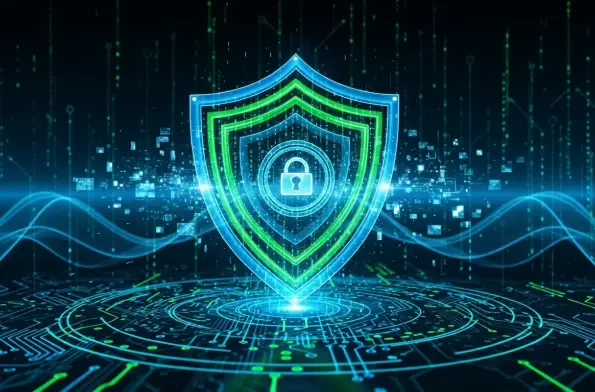Malik Haidar is a highly regarded cybersecurity expert known for his incisive approach to addressing digital threats within multinational corporations. With a unique blend of technical acumen and a keen understanding of business integration, Malik’s insights offer a profound look into the complexities of modern cybersecurity challenges. In this interview, we explore significant cybersecurity incidents, including the implications of state-sponsored cyber espionage, vulnerabilities in widely used software, and the evolving tactics of cybercriminals. As we delve into these topics, Malik shares his expert analysis and strategic perspectives on navigating the current threat landscape.
Can you explain the significance of the Wiley Rein law firm hack attributed to a Chinese state-sponsored actor?
The hack of Wiley Rein is significant due to the law firm’s clientele, which includes government entities and major corporations. The breach indicates a targeted effort to gather sensitive information, likely to gain insights into legal strategies or government dealings. Given the implication of a Chinese state-sponsored actor, this attack underscores the geopolitical nature of cyber espionage, where intelligence gathering is used as a tool to advance national interests.
What specific intelligence might have been the target of the hackers in the Wiley Rein breach?
While the exact treasures sought in the Wiley Rein breach remain undisclosed, the attackers likely targeted communications and documents related to high-stakes legal cases or government contracts. Such information could provide strategic advantages in negotiations or conflicts, whether commercial or political. This type of intelligence could offer insights into policy directions, legal vulnerabilities, or even corporate negotiations, providing substantial leverage on the global stage.
How did Italian police identify and target members of the Diskstation ransomware group?
The Italian police used a combination of cyber forensics and international collaboration to crack the Diskstation ransomware operation. By tracing digital footprints and analyzing transactional data, they identified key group members, including a suspected leader. This case highlights the importance of cross-border cooperation in combating cybercrime, as ransomware groups often operate in multiple jurisdictions, exploiting legal and geographic boundaries.
What role did Romanian nationals play in the Diskstation ransomware operation, and what charges are they facing?
Romanian nationals, including one who is suspected of leading operations, played crucial roles in executing the ransomware attacks. They are likely facing charges related to cyber extortion and possibly other cybercrime-related offenses. This operation involved encrypting data on Synology NAS devices and demanding ransoms, which requires a coordinated effort that implicates multiple actors in planning and execution.
What concerns arise from the ProPublica investigation regarding Chinese engineers working on US Department of Defense systems?
The use of Chinese engineers raises significant concerns about the security and integrity of sensitive systems. While ‘digital escorts’ with security clearances are meant to oversee their work, the potential for espionage or the inadvertent introduction of vulnerabilities remains a risk. The investigation highlights the precarious balance between leveraging global talent and safeguarding national security interests, especially when dealing with adversarial nations.
How do digital escorts ensure security, and what weaknesses have been identified in their ability to prevent espionage?
Digital escorts are intended to monitor foreign engineers, ensuring that sensitive data remains secure. However, ProPublica’s findings suggest that these escorts might lack the technical expertise to recognize subtle malicious actions or code. This gap in capability could allow state-sponsored activities to go unnoticed, emphasizing the need for enhanced training and possibly technological tools that bolster human oversight.
Could you elaborate on the Symantec vulnerability found by LRQA researchers? How does it allow remote code execution?
The vulnerability in Symantec’s Endpoint Management, specifically in the Altiris Inventory Rule Management component, allows an attacker to execute arbitrary code remotely. By exploiting this flaw, an unauthenticated individual with network access can potentially take full control of affected systems. This type of vulnerability is critical because it opens the door to various malicious activities, from data theft to deploying further malware.
What steps has Symantec taken to address the vulnerability, and what advice would you give to affected users?
Symantec has issued a patch to fix the vulnerability, which affected users should promptly apply to mitigate risk. It’s vital for organizations to stay updated with security patches and ensure their systems are configured to allow routine updates. Additionally, implementing a comprehensive security protocol that includes intrusion detection systems and employee training will strengthen an organization’s defenses against similar threats.
In the Co-op cyberattack, what type of customer data was compromised, and what actions have been taken against the attackers?
The Co-op cyberattack compromised the data of 6.5 million members, including names, addresses, and contact information. In response, four individuals have been arrested in connection with this and other local retail breaches. Such incidents highlight the ongoing vulnerability of personal data in large databases and underscore the importance of robust data protection measures and law enforcement efforts to trace and apprehend cybercriminals.
How did Sandeep Hodkasia exploit the Meta AI chatbot vulnerability, and what lessons can companies learn from this incident to improve AI security?
Sandeep Hodkasia found a vulnerability in the Meta AI chatbot, which allowed access to private interactions between users and the chatbot. This exploitation emphasizes the need for thorough testing of AI systems for security flaws. Companies should incorporate a proactive approach to identifying potential vulnerabilities, engaging in rigorous security testing, and offering bug bounties to incentivize the discovery and resolution of weaknesses before malicious actors exploit them.
What were the findings of the HP study on printer firmware patching, and how do these impact organizational security measures?
The HP study revealed that a significant portion of IT teams neglect printer firmware patching, a crucial aspect of maintaining device security. This oversight can lead to vulnerabilities that hackers might exploit, compromising entire networks. Thus, organizations must integrate printer security into their broader cybersecurity strategies, ensuring that all devices are updated and secured, and fostering collaboration between IT and security departments.
What lessons from the Stuxnet attack might guide policies for enhancing OT and critical infrastructure security?
The Stuxnet attack serves as a cautionary tale about the vulnerabilities of operational technology (OT), guiding policymakers towards enhancing critical infrastructure security. It highlights the necessity for comprehensive risk assessments and the implementation of security measures tailored specifically to OT environments. Lessons include the importance of isolating critical systems, continual monitoring, and developing rapid response strategies to mitigate any potential threats swiftly.
What strategic priorities might be driving Chinese state actors to target Taiwan’s semiconductor industry, according to Proofpoint?
China’s attacks on Taiwan’s semiconductor industry are likely driven by a strategic priority to achieve greater self-sufficiency in semiconductors. By targeting this sector, Chinese state actors aim to reduce reliance on international supply chains, particularly in light of export controls from the US and Taiwan. Such targeting reflects broader ambitions to control more of the technological resources and capabilities needed to sustain and advance China’s technological prowess and economic independence.
How do PoisonSeed attackers bypass FIDO key security in their phishing attacks, and what additional security measures could prevent such attacks?
PoisonSeed attackers bypass FIDO key security by exploiting cross-device sign-in features and tricking users into granting access via alternative sign-in methods, such as a mobile MFA app. To prevent such attacks, security measures should include user education on recognizing phishing attempts, employing phishing-resistant configurations, and implementing continuous behavioral analytics to detect suspicious activities promptly.
Could you discuss alternative methods PoisonSeed used to exploit cross-device sign-in features, and how users can recognize and avoid these threats?
PoisonSeed also exploits the real-time use of QR codes, convincing victims to scan codes that allow malicious sign-ins. Users can protect themselves by being wary of unsolicited requests to scan QR codes or provide authentication details, particularly in unexpected scenarios. Adopting secure browsing habits and leveraging security software that flags unusual requests can enhance an individual’s protection against these sophisticated phishing strategies.
Do you have any advice for our readers?
Be proactive in your cybersecurity practices. Regularly update your knowledge about emerging threats and the latest security measures. Maintain vigilance in personal and professional digital interactions, and don’t hesitate to invest in robust security systems and regular training. Encouraging a security-conscious culture within organizations and personal lives can make a significant difference in mitigating risks.













